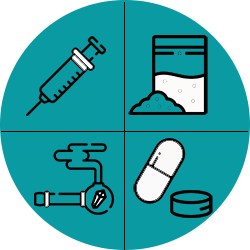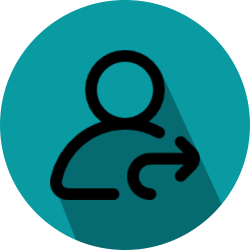Canadian supervised consumption sites statistics: Data blog
- Last updated: 2023-10-06
Supervised consumption sites (SCS) are facilities where people can consume pre-obtained drugs under the supervision of trained staff. The following SCS data covers the period of 2017 to June 2023.
Supervised consumption sites (SCS) provide people who use drugs with a safe, non-judgemental environment, sterile consumption equipment, and services that include social, medical, and mental health care. The main goals of SCS are to help prevent overdose deaths, facilitate entry into addiction treatment programs, reduce the spread of bloodborne infections (e.g., HIV, hepatitis C), and reduce the strain on emergency medical services.
For more information on supervised consumption sites, please visit Health Canada’s Supervised Consumption Sites and Services page.

4.3 million visits
- Canadian SCS saw around 4.3 million visits between 2017 and June 2023.
- Currently (September 2023), with 39 sites operating, it is estimated that around 2,700 visits take place every day. The busiest SCS in Canada see upwards of 400 visits each day.

49,000 overdoses and medical emergencies
- Canadian SCS attended to around 49,000 overdoses and drug-related medical emergencies between 2017 and June 2023, with no reported fatalities on-site.
- SCS staff also provide on-site harm reduction counselling to clients.

At least 361,000 unique clients
- Based on the data available, it is estimated that at least 361,000 Canadians had sought services provided by SCS between 2017 and June 2023.
Figure 1: Text description
| Gender | Percentage |
|---|---|
| Male | 69% |
| Female | 24% |
| Non-binary/unknown | 7% |
Figure 2: Text description
| Age group | Percentage |
|---|---|
| Under 20 years | 1% |
| 20 to 29 years | 18% |
| 30 to 39 years | 34% |
| 40 to 49 years | 27% |
| 50 to 59 years | 13% |
| 60 years and older | 4% |
| Unknown | 3% |

70% of the substances consumed were opioids
- While the types of substances consumed by SCS clients varied by geographic location, opioids were the top class of drugs consumed at the sites between 2017 and June 2023—on average, close to 7/10 of the substances consumed at the sites were opioids, with fentanyl and hydromorphone/dilaudid being the most frequently consumed types.
- The use of methamphetamine, a stimulant drug that is not an opioid, was also prevalent among SCS clients.

257,000 referrals
- SCS connect receptive clients to substance use treatment and other health and social services that include medical care, mental health support, and/or housing services.
- Canadian SCS made around 257,000 referrals to such services between 2017 and June 2023.
Acknowledgments
These data were made possible through a collaboration between Canada’s supervised consumption sites and Health Canada.
Notes on the data
Each SCS provides a standardized data report to Health Canada every month. Prior to March 2020, the data wasn’t completely standardized.
Number of clients: The true number of unique clients visiting the sites between 2017 and June 2023 is difficult to estimate. Anonymous visits and inconsistent reporting by the sites make it difficult to derive a precise and accurate estimate. The number of unique clients is based on the number of different people using a site during the monthly reporting period. A person will only be counted once by a site each month, but the same person could be counted more than once when looking at data covering a period longer than one month.
Number of referrals: The true number of referrals made by Canadian SCS between 2017 and June 2023 is difficult to estimate due to inconsistencies in how the sites defined and reported the number of referrals they made.
In addition to SCS, there are numerous Urgent Public Health Need Sites (UPHNS)/Overdose Prevention Sites (OPS) operating across Canada. The numbers presented in this publication do not include data from UPHNS/OPS.
You might also be interested in
Opioid- and Stimulant-related Harms in Canada
The most recent available data on overdoses and deaths involving opioids and/or stimulants in Canada.
Drug Analysis Service and Cannabis Laboratories
Health Canada’s Drug Analysis Service (DAS) operates laboratories across Canada that analyze suspected illegal drugs seized by Canadian law enforcement agencies.
- Date modified:
